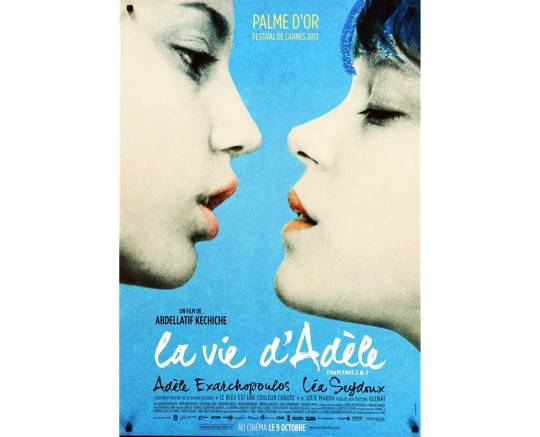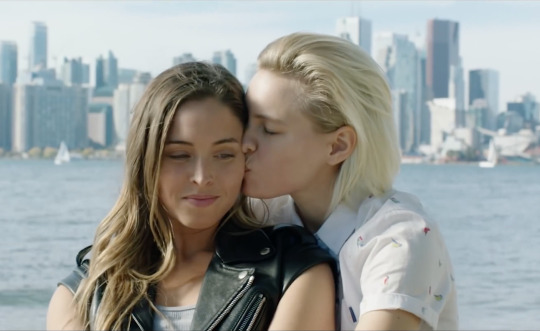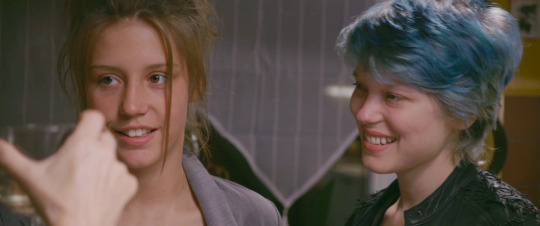#with more contemporary artists stereotyped as having huge queer audiences
Text
Oh you're a queer kid? what's your fav music artist? and don't say...
gong
steve hillage
renaissance
Van der graaf generator
herbie hancock
premiata forneria marconi
spirogyra
laurie anderson
osibisa
carlos santana
supertramp
eloy
captain beefheart
haruomi hosono
weather report
fm
caravan
egg
national health
hatfield and the north
camel
laurie spiegal
jethro tull
hyakkei
billy cobham
neu!
return to forever
utopia
soft machine
jean-jacques perry
pink floyd
josé cid
can
the shaggs
traffic
penguin cafe orchestra
midori takada
goblin
henry cow
ruth white
mahavishnu orchestra
brand x
sun ra
allan holdsworth
piero umiliani
happy the man
mother superior
white heaven
jan dukes de grey
pauline anna strom
quadrophenia (yeah ik it's a musical)
rock & rule (yeah ik it's a musical x2)
jeff wayne's musical version of the war of the worlds (YEAH IK ITS A MUSICAL x3)
crack the sky
ghost (the japanese psychedelic band not the swedish metal one)
peter gabriel
alice coltrane
twin peaks soundtrack
bloodborne soundtrack
hylics soundtrack
or the hylics 2 soundtrack
edit: just to make clear that i don't know every queer band on existence
#prog rock#jazz fusion#electronic music#and a few other genres mixed in there too#queer#silly shit#this is a parody of another more popular post I've seen grace my dash#with more contemporary artists stereotyped as having huge queer audiences#so I made a list that's more accurate to me and my own queer mutuals' tastes ✨
16 notes
·
View notes
Text
Nine Minutes to Midnight

5x21 Two Minutes to Midnight
Nine episodes to beat God, and fifteen years since Kripke pitched his original On The Road fan-fiction meets folk horror.
I’ve had a lot of fun in this little corner of Tumblr SPN fandom, over the eight years I’ve been here. I arrived as a newbie in 2012, and people already here were kind to me. I’ve seen people come and go, get disillusioned with SPN and move onto new fandoms, or arrive latterly into this one, brimming with excitement.
This is a weird social media platform, and I doubt it will be around forever, as one of its joys is how singularly bad it has been at integrating advertising.
Some of my favourite things here have been;
Comments in the tags, often funny, thinky, joyful - love this element of Tumblr.
Coda fic - this short-form story-style, which leaps into the fan-fiction gaps, loud silences and lacunae of the text - what a joy.
All the different roles people take on in fandom, as labours of love - gif makers, fic and meta writers, artists, vidders, archivists, signal-boosters, enthusiastic readers and beta-readers, art-lovers, networkers, collaborators, question-askers and answerers, and participants of all kinds (introvert and extrovert).
Completely unrelated to SPN, posts which are full of puns and hilarity, from “lik the bred” to Brits vs Americans on the subject of drinking tea. I still love Tumblr’s collective sense of humour; it’s witty and charming.
The language of gifs; those delightful comtemporary hieroglyphics of emotive expression.
The diversity - English is the shared language, but gradually it’s apparent that despite US dominance of the site, there are people from all over the world here, whose native tongues range from Russian to Italian to Brazilian Portuguese.
The collective meta experience - sharing “live” textual analysis has been huge fun. Viewing a text in a hive mind this way always shows you something you’d have missed on your own. It’s like holding up a crystal to a thousand lights and watching all the different refractions happening at once.
Again, not SPN specific, but experts in various subjects, from Egyptology to Medieval History suddenly emerging from the depths to provide a passionate and erudite exposition on their topic. Often prefaced with, “My time has come...”
Fandom has a dark side. It can be a coping mechansim, for many, in a healthy or less healthy way. There are unfortunately, always the formation of various “in-groups” and “out-groups”, ship wars, harrassment (of other fans, cast and crew), entitlement, and wild unpleasantness. And, that scourge of the internet in general; performative outrage (otherwise known as the outrage economy) which turns up the dial on provocative statements and negative emotion because that acts as catnip for engagement. A lot of people act out their shadow-selves online, projecting their own internal stuff onto others, from behind the screen.
Almost no media texts get to run as long as SPN (fifteen years) but my first fandom was (and is) Doctor Who and that has been going for over 50. It has some absolutely horrendously toxic spaces and places online, and many of pure joy. My advice is - find the joy.
Stories, by inviting us into the shoes of others, teach us at their (and our) best, the invaluable gift of empathy.
Take care of yourselves. Endings are hard, no doubt.
Special shout-out to fellow LGBTQ+ fans - hold onto your hearts.
It can be complicated loving a story telling its queer (romantic/ erotic) love story implicitly (i.e. in subtext).
Don’t forget (as I always say in my tags) subtext is part of narrative - meaning, the totality of a text contains its explicit and implicit elements; its text and its subtext, just like Metatron (aka Robbie T) told us in 9x18 Metafiction.
I wasn’t in the fandom myself, here on Tumblr, but I saw some of the fall-out from BBC Sherlock S4, and it was particularly distressing to see so many young LGBTQ+ fans feeling deeply hurt and even suicidal, because they’d read all the (extensively crafted) queer subtext in that show as a promise which would, inevitably, lead to an unequivocal queer “coming out” for John and Sherlock.
Those queer fans weren’t “self-queerbaiting” - they were just reading the totality of the text. And after all, why not read the subtext that way, as a promise? Being of a generation who’d already gotten to see many explicitly out queer characters on-screen; why not dare to imagine the subtext was a slow-burn romance with an inevitable “out” climax? Especially because Mark Gatiss (one of the writers) is out and queer himself, young queer fans were even more certain that his Sherlock would be the first “out” queer Sherlock on-screen (The Private Life of Sherlock Holmes, 1970, which Gatiss is on record as being a fan of, had previously queer-coded Holmes, as indeed does Downey’s version, in Sherlock, 2009, and Sherlock 2: A Game of Shadows, 2011.)
Of course, the corporate and production politics were no doubt complex behind the scenes at the BBC, and Gatiss himself (apparently) saw things differently saying (in an interview in Oct 2010):
“No, I don’t think I’d make a kind of gay programme. It’s much more interesting when it’s not about a single issue. And equally, I find flirting with the homoeroticism in Sherlock much more interesting.” (Buzz Magazine Oct 2010: p10).
All of which, is why I’ve been adding a disclaimer to my readings of SPN’s queer subtext for a while now - namely, that reading the subtext doesn’t promise a rainbow of obviousness at the end.
As I said, take care of your hearts, lovelies.
Perhaps we shouldn’t need the narrative closet any longer.
But, we are walking between worlds, an old one and a new, both of them currently existing simultaneously, especially in a globalised world.
Queer audience fractions are, generally, more attuned to queer subtext, because it often uses codes derived from queer culture (although reading cinematic/ television subtext of all kinds is a learned skill, and no one is born with text-reading gaydar). So, whilst queer subtext may appear “loud” to some audience fractions, it remains invisible to others. That is, historically, by design, because, whilst “out” queer characters have gradually emerged on-screen since the 1950s [and the end of the Hays Code in Hollywood] queerness was, and still is (depending on where one is in the world) subject to legal penalty, state censorship or corporate production censorship.
A contemporary kind of state censorship is e.g. in China, where overt LGBTQ+ themes and characters cannot be depicted on-screen (hence, the queer subtext in The Untamed). A contemporary commodity kind of censorship might be e.g. notes from the Network, or TPTB at Marvel Studios with an eye on box-office. Queer subtext has the ability to slip past the censors, or be tolerated by them; because, now you see it/ now you don’t. A character with a straight “surface” reading and a queer subtextual one may (depending on the film/ TV product and its market etc,) be seen to pose less risk as a commercial product, whilst being able to appeal to different audience fractions simultaneously. For example, Captain Marvel (2019) and, as above, BBC Sherlock (2010-2017).
And yes, it’s complicated, because in the midst of that still extant censorship, which queer writers and other creatives on set may indeed be trying to work around by using queer subtext, we can see another world is possible. More out queer stories are being told. And, although we may love to see implicit queerness rather than no queerness at all, and indeed although implicit queerness may (arguably) have the freedom (still) to tell less boundaried or stereotyped stories than explicit queerness (with powerful effects on the audience fractions, both queer and straight, who do “see” it) we can’t deny that it does suit corporate entities, in some cases, to be able to appeal to a dual audience without the perceived “risk” of “outness”. A form of “queer-sploitation” which leads to the charge of “queer-baiting”.
The issue is, perhaps, particularly one surrounding male hero characters in Hollywood (and here in the UK) a) because “queer stories” are (still) often, not seen as likely to have universal appeal for broader audiences, whereas “straight stories” are not framed as “straight stories” but as universal ones, and b) because of the persistence of the prejudiced belief in particular that “queerness” undermines masculinity, especially “heroic” masculinity (here we have diverged markedly from the ancient Greeks). It’s somewhat different for female characters, but that’s another post. Fantasy, in the on-screen medium (if less so in fiction or comics) appears to be a more regressive genre than, say, comedy, in terms of the depiction of “out” queer central (rather than side) characters, with the exception of the Wachowskis’ Sense8 (2015-18) in which pretty much everyone is queer. I know there’s Ruby’ Rose’s Batwoman (2019- ) which I haven’t had a chance to check out yet, and we’ve got some queer Marvel (side) heroes upcoming, apparently; Valkyrie in Thor: Love and Thunder and Phastos in The Eternals - let’s see how that goes.
Moreover, queer subtext doesn’t have an exact analogy i.e. a “straight subtext” equivalent. Yes, many films and TV shows imply romantic/ sexual tension and interest between M/ F (pre)couples before it is “confirmed” they’re into each other in the text. However, because straight is the default assumption, audiences may muse and disagree about the potential for a M/ F romance at the implicit stage (as they have done in SPN fandom re Sam/ Rowena) but they don’t ask - “Does this mean they might be straight ????” It is assumed. Queerness, on the other hand, in order to be widely recognised (rather than solely by the subtext-reading audience fraction) must “come out” in some manner, explicitly, in the text (I don’t mean graphically, but “beyond reasonable doubt”). In other words, as painful as it is, we are not starting on a level playing field. It’s not fair, but it is the deal.
That doesn’t mean we can’t love contemporary queer subtextual stories, just that it’s important to acknowledge it can be painful, for some, to do so, and just as it’s important to acknowlege it’s OK to find them too painful to love, also (historical texts obviously operated under different circumstances).
Queer audiences are not homogenous. We can, and do, see things differently from one another, perhaps particularly across generations.
It is the case however, I think, that the structuring of a story by the narrative closet, as SPN has been structured by the narrative closet (up to this point, mid S15) (by which I mean its queerness is transparent to some, invisible to others, by design) cannot help but remind many queer audience members of our own struggles with the real world closet. Indeed that may make the story attractive, or unattractive, to different folk.
Incidentally, which is why I avoid it, I think the “it’s canon”/ “it’s subtext” debate is a false dichotomy and a bit confusing, as there are two, perfectly legitimate (within their own terms) definitions of “canon”. In the fandom sense, where “canon” means a romantic/ erotic pairing explicitly confirmed in the text, Destiel (meaning romantic/ erotic orientation between Dean and Cas) is not “canon” (as at 15x11). It is implied. Of course, it is explicit text that they care deeply for one another - “You’re my family. I love you, I love all of you” (12x12 Stuck in the Middle with You), “You’re my best friend” (15x09 The Trap). The exact nature of that relationship remains, however, deliberately, ambiguous.
In the literary sense, in which “canon” means “the official body of work”, SPN’s official body of work contains a metric tonne of implicit romantic/ erotic Dean/ Cas, so, it is part of the SPN “canon” in that sense - “subtextual canon” if you like. Although, of course, because implied, therefore open to interpretation.... deliberately transparent to some and invisible to others.
Despite all this complexity, and, indeed despite other elements of the SPN narrative which I have struggled with personally (the early seasons’ misogyny is off the charts sometimes, the brutally insensitive manner of Charlie’s death) I have loved this story, Supernatural, truly, madly, deeply, in large part because of its (implicit) queerness. And for may other reasons additionally, from its folkloric beginnings and dark initial cinematographic palette, to its melodrama, to its, eventual, Ourboros structure, and its Jungian alchemical journey marrying the cosmic to the earthly.
Reading the show without the queer subtext remains possible, but oh boy is that analogous to only considering the above sea-level portion of an iceberg.
I would prefer a rainbow of obviousness at The EndTM, but I don’t expect one. What I expect is continued, deliberate, ambiguity. Something I am sure we will be debating the ethics of, long after.
I could be wrong :-). But I am taking my own advice, and taking care of my heart.
For now, it’s nine minutes to midnight; let’s see how the story ends.
And afterwards, however the chips may fall, the characters will (as this most meta-narrative of seasons has been busy telling us) be set free of “Chuck’s” control. They will belong to us, in a thousand thousand fan-works, for as long as we care to keep on loving them.
#Supernatural#SPN meta#Meta#5x21#Two Minutes to Midnight#Endings are hard#Who am I kidding#Fandom is going to go wild#Whatever happens#The great queerbaiting debate#Reading Subtext#Dean is bisexual#Destiel#Still subtext#But subtext is part of narrative
47 notes
·
View notes
Text
Sex, sex, sex and so much more in Blue is the Warmest Color

The French film, Blue is the Warmest Color was released in 2013 and directed by, Abdellatif Kechiche. It follows the story of a young woman named Adele who faces crises with her queer identity. The film begins with Adele facing pressure from her peers to have a relationship with a boy named Thomas. On her way to her first date with Thomas, Adele passes a young blue haired girl in the street and later has a sexual dream about her. This scene is the audience’s first glimpse into Adele’s queer identity. Later in the film when she officially meets the blue haired girl named Emma, an art student in university, at a gay bar the audience begins to see Adele’s queer identity unfold and come to life through their relationship. While this film does work to bring attention to queer elements that are so often missing from films, it also falls victim to heteronormative and hegemonic values in the way that it presents Emma and Adele’s relationship.
The relationship between Adele and Emma seems to follow a similar arc as any other romantic film. They first officially meet at a bar as some type of “meet cute” and Emma later seeks Adele out at her high school, and they have a romantic moment on a bench while Emma sketches Adele. Though unlike the heteronormative romantic films often seen, Blue is the Warmest Color also functions as a queer breakout film. Andre Cavalcante (2017) in his article “Breaking into Transgender Life: Transgender Audiences’ Experiences With “First of Its Kind” Visibility in Popular Media” defines breakout texts as “media that portrays “first of its kind” representation” to a marginalized group. While this film is not about Trans characters like the ones Cavalcante analyzes in his article, the film does work to represent queer women’s lives in a way that is not often presented in mainstream media. One of the ways that the film does this, is through its representation of Adele and Emma’s sexual relationship. While the sex scenes throughout this film are striking and even at times uncomfortably long, they give queer women a sexual visibility that is rarely seen.

The sex scenes that occur in the film not only occur in a queer context meaning that it is not prompted by a male third party, as we see in other hegemonic films, but the content is also extremely explicit. They show the female body in a realistic and raw way. They do not hesitate to show female genitalia, and in doing this they break patriarchal boundaries that demand modesty and concealment of the female body. The scenes also give visibility to queer women that is not through the Heteronormative male gaze. The sexual interactions are by women and for women and unlike the Canadian queer film, Below Her Mouth that also has female sex scenes, they are not all focused around a strap on.

While queer women can and do use strap ons in real life, the persistence of it in every sexual encounter in Below Her Mouth presents a binary and heteronormative view of female-female sexual relationships and re-enforces the idea that one of them is “the man.” The sex scenes in Blue is the Warmest Color also present a reciprocal sexual relationship, where in neither of the characters seem to be the “dominant” or “submissive,” and a power dynamic between the two, at least in this point of the film, is non-existent. This works against the heteronormative narratives that are so often portrayed in romantic films where one character (typically the man) has more control over the other character. The film also makes the sexual interactions between the two women appear to be consensual, and while this doesn’t happen in the form of either party asking or saying yes, the scene does include mutual participation unlike typical heteronormative sexual encounters seen in films where one party seems to be resisting for one reason or another, and the forcing of the sexual interaction somehow leads to consent.

Even though this film uses sex scenes to break patriarchal barriers and gives visibility to queer women, as Cavalcante also discusses in his article the short comings of breakout texts such as Blue is the Warmest Color come in their tendency to fall into hegemonic tropes and feed stereotypical narratives. To start, Adele and Emma externally fall into normative ideas of queer female couples. Adele is the innocent femme character and Emma is her butch lover. Later in the film, Adele pursues a career as a teacher and takes on the domestic role, while Emma is a rugged artist.

This depiction of the characters falls into binary and heteronormative values and reinforces the idea that a queer relationship needs to mimic straight ones by having a “man” or masculine partner and a feminine partner. In addition, the age gap between the two characters is also worth discussing. While without knowing that Emma was much older than Adele, the audience may assume their ages were similar, but the audience is explicitly told that Adele is 15 while Emma, in her fourth year of university, is assumedly around the age of 22. While, this age gap is not huge, it is still large enough that in contemporary western society it raises some red flags. Not only does this age gap seem strange to include, but it also reinforces narratives surrounding the idea that the queer community is filled with pedophiles and is out to corrupt the youth. This is also played out when Adele cheats on Emma with a man and throughout the rest of the film the audience never sees her have any interactions with any other women.

This is problematic because not only does it make Emma and Adele’s relationship seem like some sort of fad that Adele was seduced into by the older Emma, it also suggests that femme women are inherently straight. Adele’s lack of interactions or relationships with women other than Emma, and in contrast Emma’s multiple female relationships throughout the film suggest that feminine women like Adele are inherently straight and that to be truly queer you must be butch like Emma. Similarly, Adele never comes out to her family or friends and her being closeted is almost never mentioned, and even when she does eventually have Emma over to her parents’ house it is under the guise that Emma is just her friend. This is problematic because again it suggests that if you do not externally look queer, then it is easier to stay in the closet. While as discussed in Bonnie Dow’s (2010) article on the Ellen coming out episode, an individual’s coming out is not “taken to imply the success of the discourse” around queerness, it seems for a film such as this it would be important to include. To not include one of the main queer characters coming out at all suggests a shame around queerness that is perpetuated, and not addressed or corrected through Adele’s story.
Overall, Blue is the Warmest Color presents its audience with a raw version of queer female-female relationship, but the way that I experienced the film is probably much different from a queer identifying female. While I was watching the film I thought of Alexander Doty’s (1993) piece Making Things Perfectly Queer: Interpreting Mass Culture, in which he describes that in the same way that “heterocentrist texts can contain queer elements […] heterosexual, straight-identifying people can experience queer moment(s).” While Doty discusses this in terms of queer readings of straight texts, it applied to my experience watching the film, because during the raw and unfiltered sex scenes I did experience queer moments. Though despite my queer moments, I do understand that my analysis is very skewed because despite being a feminist and having knowledge through gender studies classes, I have not had queer experiences. Therefore, for me to say that the film depicts “real” life queer female relationships and even queer female sex lives may be an over exaggeration. Especially the scenes where the women are “scissoring” stood out to me as being potentially stereotyped though again, I do not belong to the queer community, have not experienced a female-female relationship, and have not discussed female-female sexual relationships with queer women and can not speak to the accuracy. It is also notable that I have not seen an abundance of French films and so the nudity in the film that I describe as being liberating or forward may simply be part of French culture/films.
Sources:
Cavalcante, A. (2017). Breaking Into Transgender Life: Transgender Audiences Experiences With “First of Its Kind” Visibility in Popular Media. Communication, Culture & Critique, 10(3), 538–555. doi: 10.1111/cccr.12165
Doty, A. (1993). Making things perfectly queer: interpreting mass culture. Minneapolis u.a.: Univ. of Minnesota Press.
Dow, B. (2001). Ellen, Television, and the Politics of Gay and Lesbian Visibility. Critical Studies in Media Communication, 18(2), 123–140. doi: 10.1080/07393180128077
Kechiche A. (Producer), & Kechiche, A., Maraval V., Chioua B., Lemal G., Martin A. (Director).(2013). Blue Is the Warmest Color [Film]. France.
Mullen, A. (Producer), & Mullen, A. (Director). (2017). Below Her Mouth [Film]. Canada.
youtube
6 notes
·
View notes